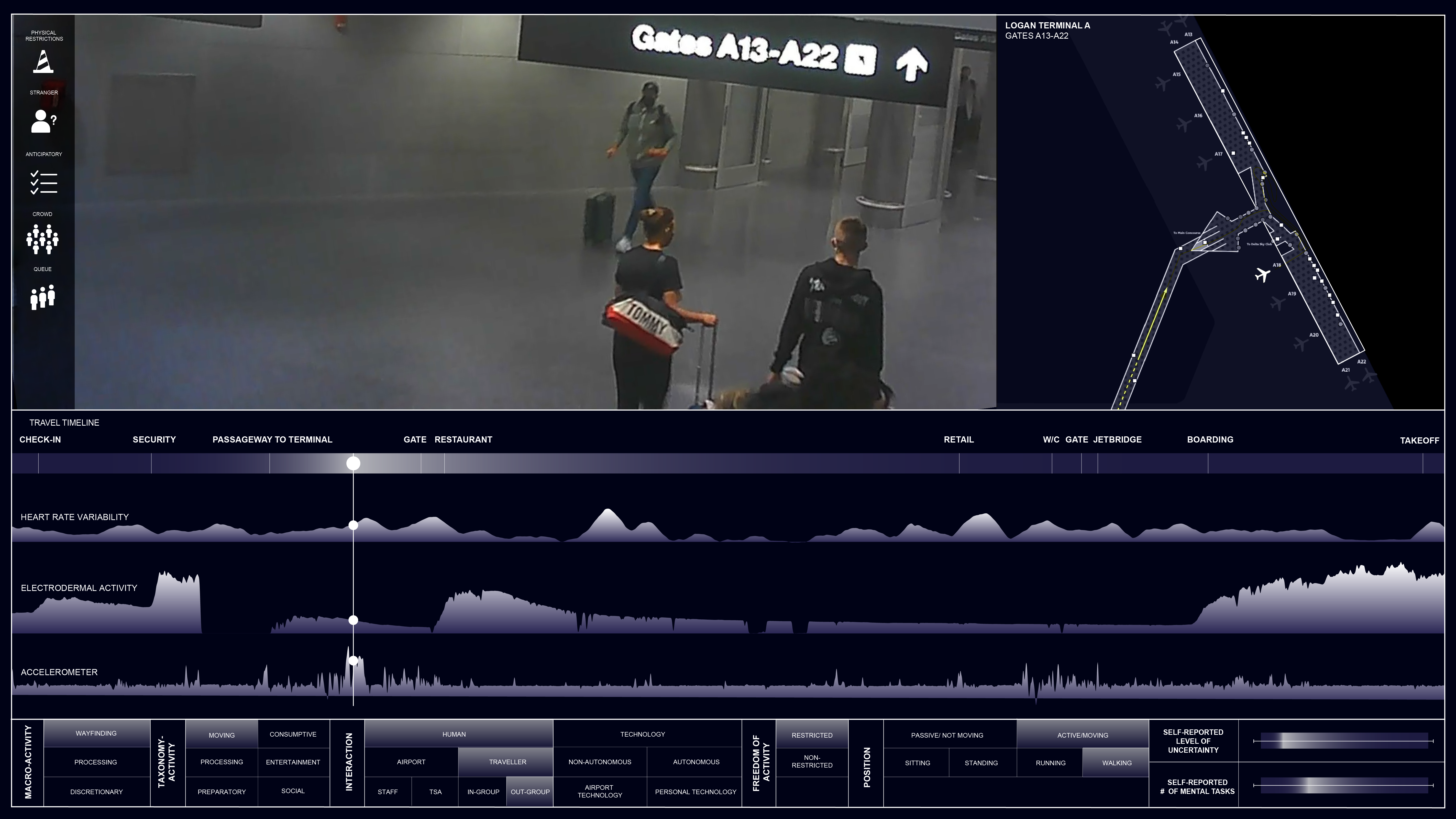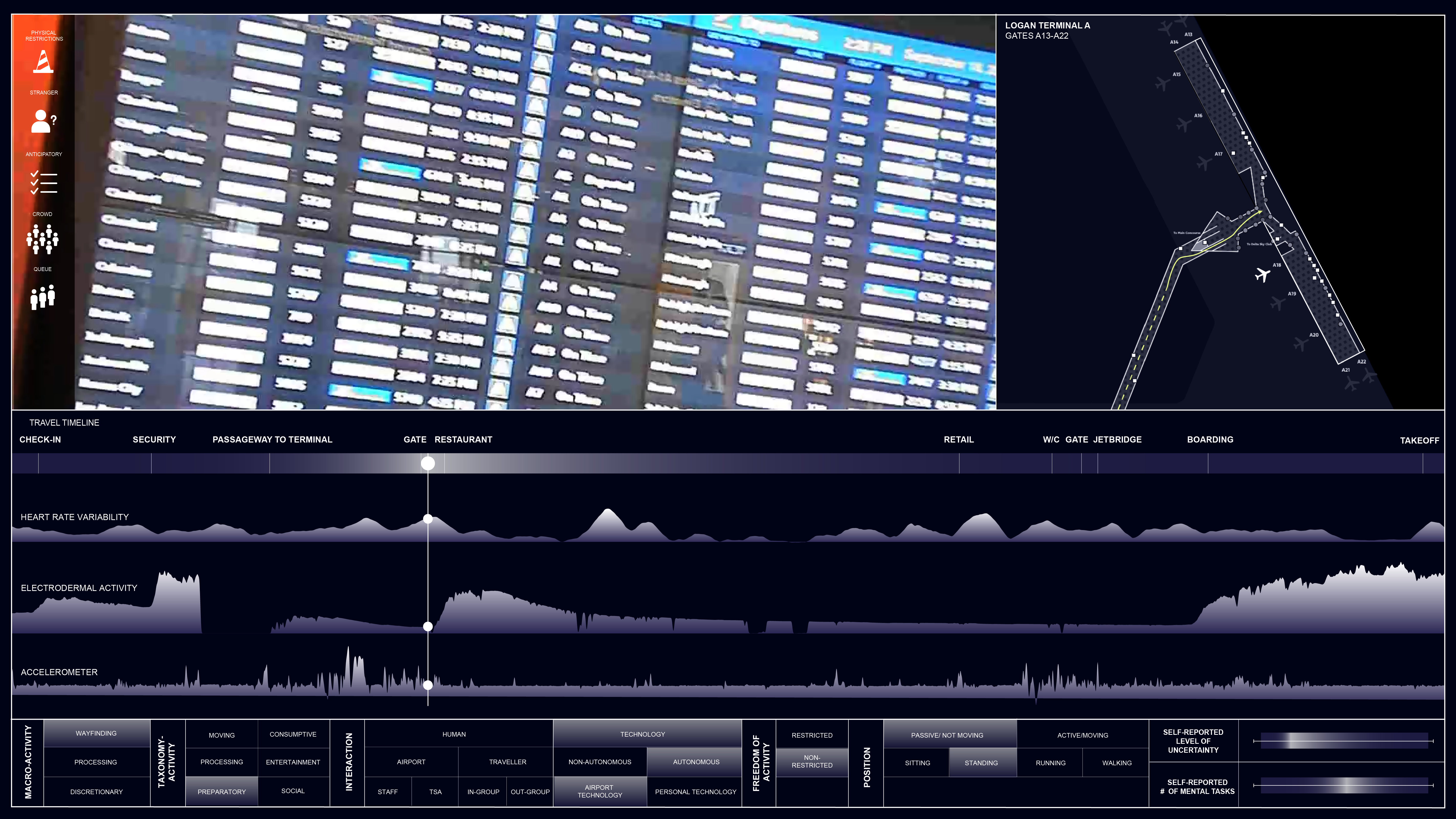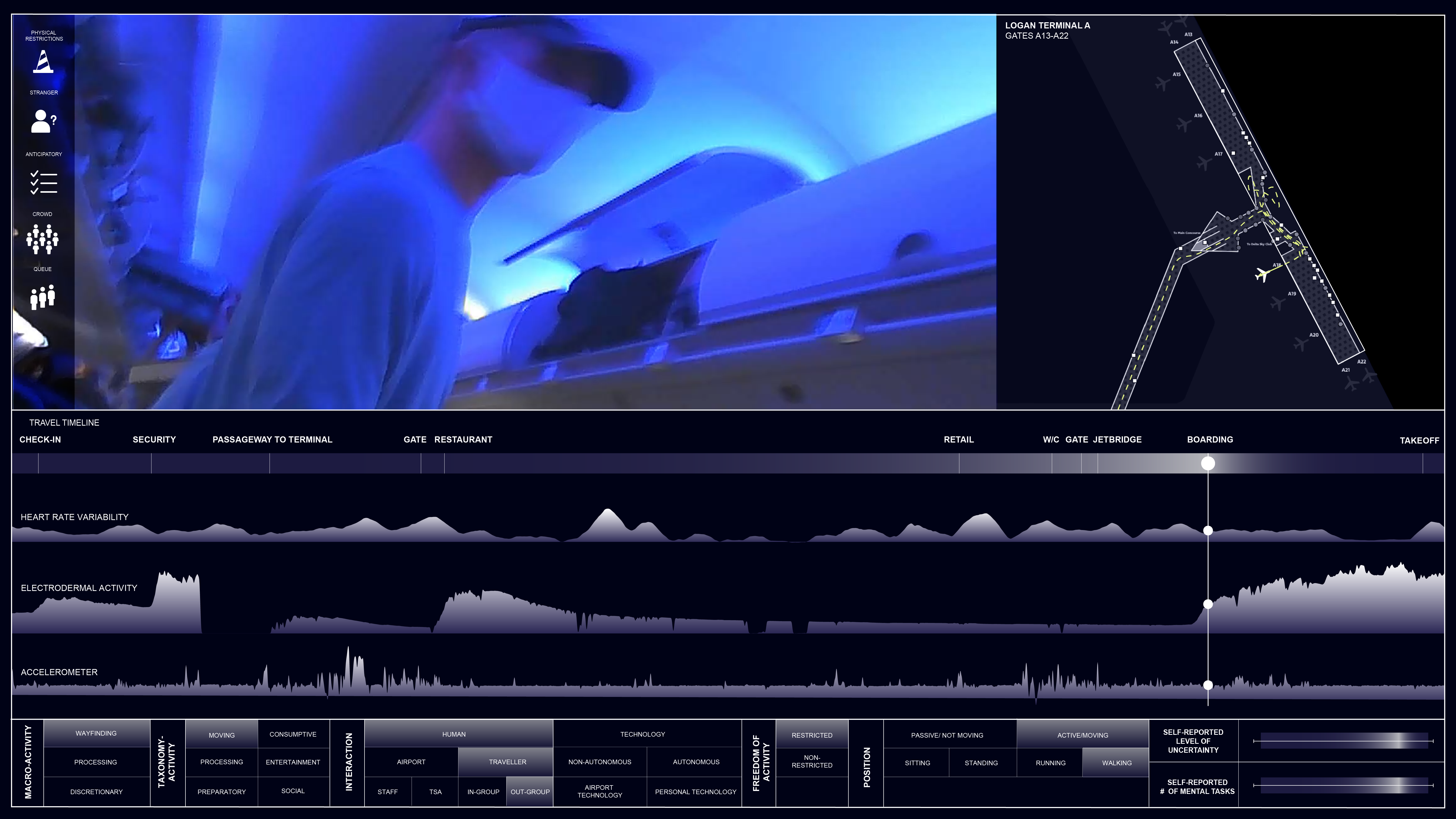A Biometric Method for Spatial Experience Analysis — A Case Study of Airport Design and Traveler Stress
Authors:
Humbi Song*, Isa He*, Zach Seibold, Allen Sayegh (*co-first authors)
Keywords:
Biometric wearables, Spatial experience, Stress, Built environment, Airport, Interdisciplinary research methods
Abstract:
Why do certain built environments and events induce stress? How does the design of our spatial environment affect our mental state? What can we do to measure and understand these interactions? Interdisciplinary collaborations between architecture and psychology have given rise to a new frontier of architectural research, and emerging biometric sensor technologies lead to innovative research methods that can provide a unique insight into human spatial experiences. This research uses the passenger experience of air travel as a case study for prototyping methods of quantifying and understanding individual spatial experience. The airport presents a potent case study environment; though significant energy has gone into engineering the passenger experience, the prevailing cultural perception of air travel remains tinged with unease and anxiety. The presented research outlines a methodology for quantitatively measuring the passenger experience of the airport design: equipping passengers with biometric electrodermal activity (EDA) sensors – a biomarker significantly correlated to emotional stress response, analyzing first-person video footage worn by participants to map contextual information, and conducting interviews to assess the participant’s perception of the air travel experience. A dashboard was then developed to facilitate visual crossreferencing and analysis of aspects of airport design and social stressors at airports with the biometric data of the passengers and their self-reported perceptions. The overall aim of this research is to identify key elements to help rethink and redesign airport architecture and experience. Future research can utilize this methodology to facilitate speculations on alternative scenarios for designing not only airport architecture but also other analogous public spaces.
Conference: The European Conference on Arts, Design, and Education (ECADE 2022), University of Porto, Portugal, July 2022








Citation:
Song H.*, He I.*, Seibold Z., & Sayegh A. (2022) A Biometric Method for Spatial Experience Analysis: A Case Study of Airport Design and Traveler Stress ISSN: 2758-0989 – The European Conference on Arts, Design & Education 2022 Official Conference Proceedings https://doi.org/10.22492/issn.2758-0989.2022.44